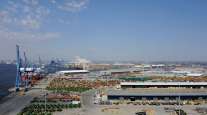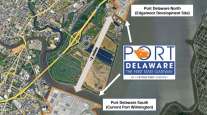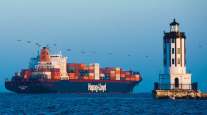Senior Reporter
AAPA CEO Connor to Retire Oct. 1 After Four Years at Helm
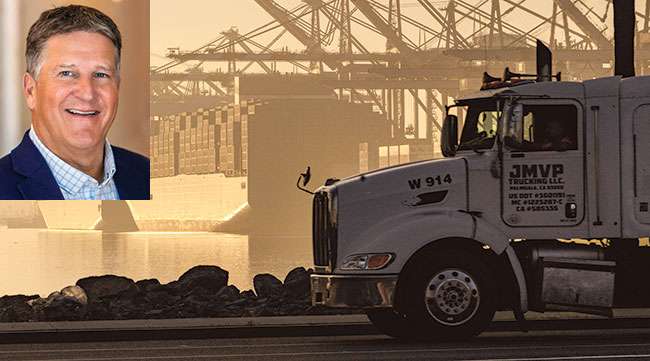
[Stay on top of transportation news: Get TTNews in your inbox.]
American Association of Port Authorities CEO Chris Connor announced he is retiring effective Oct. 1.
Connor, 65, took over the post in the fall of 2019 and guided the organization through the supply chain tumult brought on by the COVID-19 pandemic, and then the ensuing recovery.
“Leading AAPA these past four years has been a tremendous experience,” Connor said in a statement announcing his departure from the Washington, D.C., organization. “The pandemic and all the attention it placed on the supply chain and ports specifically created a unique moment for the industry. It has been amazing to participate in the national conversation on ports and help carve out historic federal government infrastructure funding for the industry.
“Notwithstanding the 35-plus years of international transportation experience I brought into the role, I honestly learned more about what makes freight move during the last four years, than I did in the previous 35. We have a wonderful team at AAPA, and I have no doubt that they’ll continue to do great things for ports for many years to come.”

Connor told Transport Topics he intends to remain active in the industry, but in a different leadership role from the one he has occupied the past four years.
Before joining AAPA, Connor served in a variety of capacities in the maritime and shipping industries, including as the global CEO of Wallenius Wilhelmsen Logistics in Oslo, Norway.
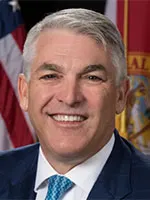
Anderson
“The momentum the American Association of Port Authorities gained under the dynamic leadership of Chris Connor and the wonderful team he assembled has the association on a trajectory toward success,” Port of Tampa Bay CEO Paul Anderson said. “Chris has been a stalwart advocate for AAPA, and we are grateful for the impact he and his team have played in the continued growth of the association during his tenure. He has built a strong team and put the association on solid ground, with broader membership.”
In an interview with Transport Topics Radio that will air on SiriusXM the weekend of July 29-30, Connor said some cargo volume continues to shift from West Coast to East Coast facilities, but at a slower level than in late 2022 and the first half of this year. Connor anticipates freight levels will rebound on the West Coast now that the Pacific Maritime Association and International Longshore and Warehouse Union have negotiated a tentative agreement that is in the process of being ratified by the union’s 22,000 members.

How effective have third-party services proved to be for fleets? Let's find out with Michael Precia of Fleetworthy Solutions and Dan Rutherford with Summit Virtual CFO by Anders. Tune in above or by going to RoadSigns.ttnews.com.
“This was uncomfortable for everyone,” Connor said of the 11 months of negotiations. “It went on seemingly way too long, and at the very end there were what I call flash fires, local work actions, where I think the parties were flexing their muscles a bit and trying to exert some leverage. But it’s a big relief a tentative agreement is in place, and the tone and tenor of the conversations is much healthier.”
Connor said work is underway at those facilities to earn back some of the business they lost.
“I know for our big West Coast ports, they can now focus on regaining market share that was lost due to the uncertainties that the protracted negotiations caused and with everything that happened during the peak of the pandemic,” he said.
It is estimated that the major West Coast facilities have to date seen at least a 20% drop in year-over-year business since the record-shattering freight surge in 2021 and 2022, with much of that inventory coming into the country through the ports in California and Washington.
Federal officials say in the Infrastructure Investment and Jobs Act the government will spend more than $17 billion to upgrade ports and improve their ability to deal with the long-term effects of climate change.
Connor and others say combined with state, local and private money, the ports are expected to receive as much as $25 billion. However, Connor says AAPA leadership is focusing on encouraging governments to streamline the permitting process for improvements, because the longer it takes, the more projects cost because of inflation.
Want more news? Listen to today's daily briefing above or go here for more info
“Nine months ago, the first round of stepped-up funding for ports had just come out, $703 million,” he said. “And still, the first dollar has not touched a shovel yet, and it’s not a complaint, it’s just a reality. We are thrilled with the amount of money that is coming to the ports and more yet to come.
But the permitting process is bureaucratic, to say the least, and it takes about 455 days from the day of the award to the day the money is released, before work begins on the project.”
Bipartisan legislation has been introduced in the Senate to speed up the permitting process.


